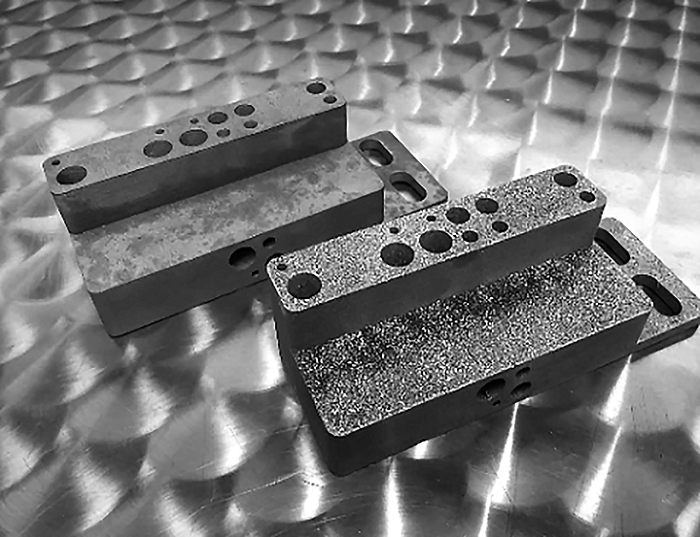ASTM G85 Modified Salt Fog Testing for Surface Treatments
The ASTM G85 Modified Salt Fog Test is a critical procedure used to evaluate the resistance of materials and coatings against corrosion, especially after surface treatments such as painting, powder coating, or anodizing. This test is particularly important in sectors like automotive, aerospace, and marine, where exposure to corrosive environments can significantly impact product performance.
The ASTM G85 salt fog test simulates the corrosive environment that materials may encounter by exposing them to a solution of sodium chloride (salt) in water vapor. The test helps determine the durability of surface treatments over time under controlled conditions. This testing method is widely accepted and used globally, ensuring consistency and reliability in quality assessments.
For quality managers and R&D engineers, understanding the nuances of ASTM G85 Modified Salt Fog Testing is essential for maintaining product integrity. The test not only ensures compliance with industry standards but also aids in the continuous improvement of surface treatments through rigorous validation.
The process involves preparing specimens according to specific dimensions provided by ASTM G85. Specimens are then exposed to a controlled salt fog environment, and their condition is assessed visually and with other non-destructive testing methods after pre-determined exposure times. This allows for accurate evaluation of the effectiveness of surface treatments in real-world conditions.
In this section, we will delve into why ASTM G85 Modified Salt Fog Testing matters, the standards it applies to, its scope and methodology, as well as frequently asked questions from industry professionals.
Why It Matters
The ASTM G85 Modified Salt Fog Test is crucial for ensuring that surface treatments are effective in preventing corrosion. This test helps manufacturers and quality control teams verify the durability of their products under harsh environmental conditions, thereby enhancing product reliability and customer satisfaction.
In sectors like automotive and aerospace, where materials need to withstand extreme weather conditions and corrosive environments, ASTM G85 provides a standardized method for assessing the performance of surface treatments. This ensures that manufacturers can consistently produce high-quality products that meet both industry standards and end-user expectations.
For R&D engineers and compliance officers, the test results are invaluable in making informed decisions about material selection and process optimization. By identifying weaknesses early on, they can focus on areas needing improvement, leading to more robust product designs. Additionally, this testing method supports regulatory compliance by ensuring that products meet international standards like ASTM G85.
Compliance officers benefit greatly from the standardized approach provided by ASTM G85 Modified Salt Fog Testing as it simplifies the process of meeting industry requirements and regulations. This not only reduces the risk of non-compliance but also enhances a company's reputation for quality and reliability.
Applied Standards
| Standard | Description |
|---|---|
| ASTM G85-18 | This standard specifies procedures for the determination of resistance to corrosion in coated and uncoated metal specimens by exposure to a controlled atmosphere containing condensed salt solution. |
| ISO 9227:1996 | Equivalent international standard that provides similar guidelines for salt spray testing. |
| EN ISO 14612 | This European standard covers the evaluation of resistance to atmospheric corrosion and salt fog exposure. |
The ASTM G85 test is widely recognized and adopted globally, making it a cornerstone in the quality assurance process for surface treatments. Compliance with these standards ensures consistent and reliable results across different testing facilities and regions.
Scope and Methodology
The ASTM G85 Modified Salt Fog Test is designed to evaluate the resistance of materials and coatings against atmospheric corrosion by simulating a high-humidity environment with condensed salt solution. This test is particularly useful for assessing surface treatments like painting, powder coating, anodizing, and galvanization.
Specimens are typically prepared according to ASTM G85 specifications, which include precise dimensions and preparation techniques. The specimens are then exposed to a controlled salt fog environment within a closed chamber. The test duration varies depending on the specific requirements of the product or coating being evaluated, but it can range from 24 hours up to several weeks.
During the exposure period, the condition of the specimens is monitored and recorded. Visual inspection is performed regularly to observe any changes in appearance due to corrosion. Non-destructive testing methods such as thickness measurements, conductivity tests, or color changes may also be used to assess the integrity of the surface treatment.
The test results are reported based on specific criteria outlined in ASTM G85. These include the rate of corrosion, the extent of discoloration, and any other visible signs of deterioration. The data collected from these tests can provide valuable insights into the performance of different surface treatments under corrosive conditions.





